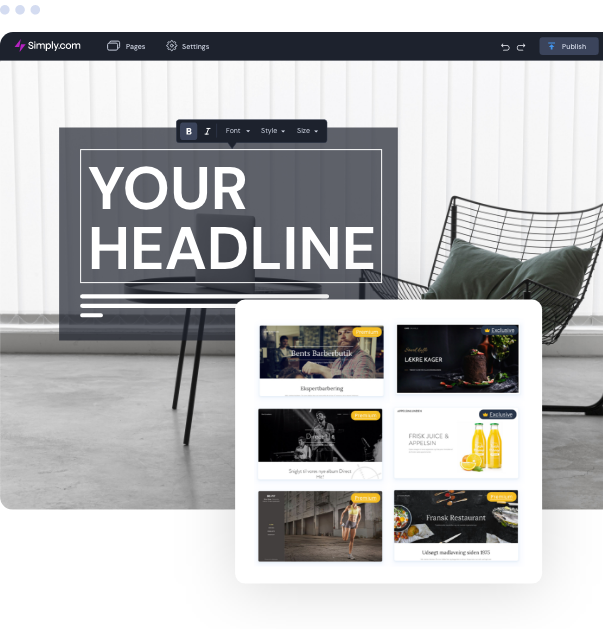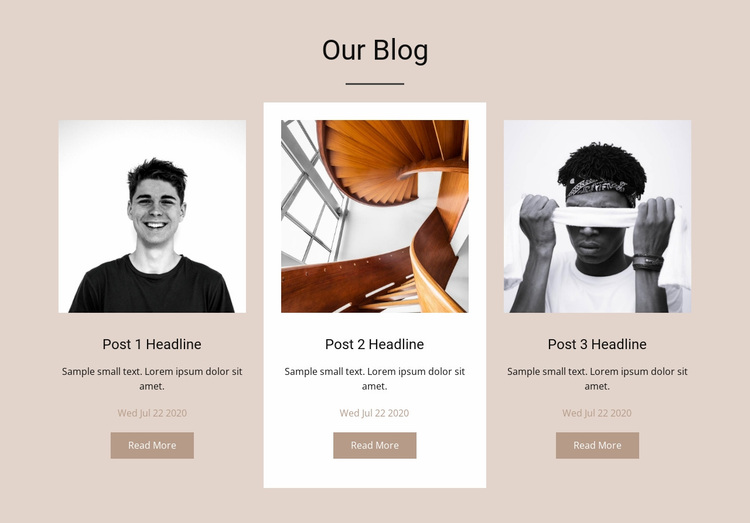Why Website Design is Crucial for SEO and Digital Marketing Success
Why Website Design is Crucial for SEO and Digital Marketing Success
Blog Article
Modern Internet Site Design That Catches Attention and Converts
In a progressively digital landscape, contemporary web site design has actually emerged as a pivotal factor in catching individual interest and driving conversions. By tactically utilizing visual hierarchy, receptive formats, and engaging interactive components, designers can produce experiences that not just draw in visitors but likewise promote meaningful communications. Furthermore, reliable call-to-action strategies play a critical role in leading users towards wanted outcomes. As we discover these important parts, it becomes clear that comprehending their interaction can dramatically affect a web site's efficiency and customer fulfillment. What are the essential aspects that truly make a distinction?
Relevance of Visual Power Structure
Visual pecking order is an important element in internet site style, as it guides customers' attention and enhances their overall experience. By purposefully organizing content, developers can route individuals to the most essential info initially, therefore enhancing involvement and enhancing usability.
Incorporating a rational flow in web content plan is vital; as an example, putting the most crucial information on top of a web page promotes instant acknowledgment. Furthermore, regular usage of typography, such as differing font dimensions and styles, helps develop a clear material framework. This company not just aids in navigation but also constructs depend on, as individuals feel extra comfy when they can conveniently locate what they are seeking.
Eventually, a well-executed aesthetic pecking order not just improves visual allure however also dramatically affects individual habits. By focusing on important aspects and making sure a smooth experience, developers can properly transform site visitors into consumers, strengthening the significance of this foundational design principle in modern web site development.
Responsive Design for All Devices
Producing a smooth experience throughout different devices is necessary in today's electronic landscape, where users access websites from mobile phones, desktops, and tablets alike. Receptive style is an important technique that makes certain websites adjust fluidly to different screen resolutions, positionings, and dimensions. By utilizing flexible grids, images, and CSS media questions, developers can develop designs that maintain aesthetic integrity and functionality, regardless of the tool being used.
The significance of responsive style prolongs beyond looks; it straight impacts individual engagement and conversion prices. A web site that functions well on all gadgets encourages longer visits and minimizes bounce prices, as individuals are more probable to connect with content that is very easy to browse. Search engines, specifically Google, prioritize mobile-friendly websites in their rankings, making responsive style a crucial element of search engine optimization (SEO)
Incorporating receptive layout not only boosts user experience but also streamlines the advancement procedure. By producing a single site that functions throughout tools, companies can conserve time and sources compared to creating different mobile and desktop versions. Eventually, receptive layout is an essential approach for modern website style, making certain ease of access and contentment for all individuals, regardless of their gadget.
Involving Interactive Components
While a responsive design lays the groundwork for a functional internet site, including interesting interactive aspects is important for recording individual interest and fostering deeper links. Website Design. Interactive elements, such as computer animations, quizzes, and clickable infographics, develop an extra vibrant user experience, encouraging site visitors to invest even more time on the website
Including interactive functions can additionally guide customers via facility info, making it less complicated to absorb content. As an example, interactive sliders can show product variants, while embedded video clips can offer demos or testimonials that reverberate even more than static images or message. Moreover, gamification methods, like rewards for involving or completing jobs with material, can improve customer motivation and retention.
Effective use of interactive elements not just enhances the user experience yet can additionally lead to greater conversion rates. It is important to balance interactivity with efficiency; extremely complicated features might hinder site speed, adversely influencing customer complete satisfaction.
Structured Navigation Practices
Effective navigation is a foundation of any type of effective web site, as it straight affects user experience and web content availability. Structured navigating practices make sure that individuals go to website can quickly find information, enhancing their interaction with the website. A well-structured navigating menu must be user-friendly and basic, typically featuring a minimal variety view website of key groups to stay clear of frustrating visitors.
To achieve streamlined navigating, developers ought to focus on an ordered framework that practically arranges content. Executing breadcrumb routes can provide users with context concerning their present location within the website, enabling for seamless backtracking. In addition, making use of drop-down food selections can successfully save space while still giving accessibility to subcategories.
Responsive layout is important, as navigating must be useful across all devices (Website Design). Mobile customers, particularly, advantage from touch-friendly food selections and collapsible areas that keep use without compromising visual appeals

Effective Call-to-Action Approaches
A well-crafted call-to-action (CTA) is essential for guiding customers towards preferred results on a site, as it encourages them to involve with material or buy. To optimize their effectiveness, CTAs need to be clear, compelling, and purposefully placed throughout the website.
First, use action-oriented language that connects urgency or worth, such as "Obtain Started," "Sign up with Now," or "Case Your Discount rate." This language not only inspires users but also sets clear expectations regarding the following steps.
Second, consider design elements; CTAs should stand out visually via contrasting colors, sufficient whitespace, and noticeable positioning. A switch that is easy to see and click rises the probability of customer interaction.
Additionally, customizing CTAs based upon user actions or demographics can substantially boost engagement. Tailored messages reverberate more with individuals, driving greater conversion prices.

Conclusion
These components collectively boost user experience, making sure that site visitors remain involved and inspired to discover material even more. By prioritizing these layout principles, services can substantially boost individual retention and conversion rates, eventually leading to higher success in the digital landscape.
In a significantly digital landscape, modern-day website layout has arised as a critical aspect in recording customer attention and driving conversions.Aesthetic hierarchy is a critical aspect in web site design, as it overviews customers' focus and boosts their total experience.The significance of receptive style expands past aesthetics; it directly influences user involvement and conversion prices.Including receptive layout not just boosts user experience yet additionally simplifies the development process. Eventually, receptive layout is a fundamental approach for modern-day web site layout, making certain availability and satisfaction for all individuals, no matter of their gadget.
Report this page